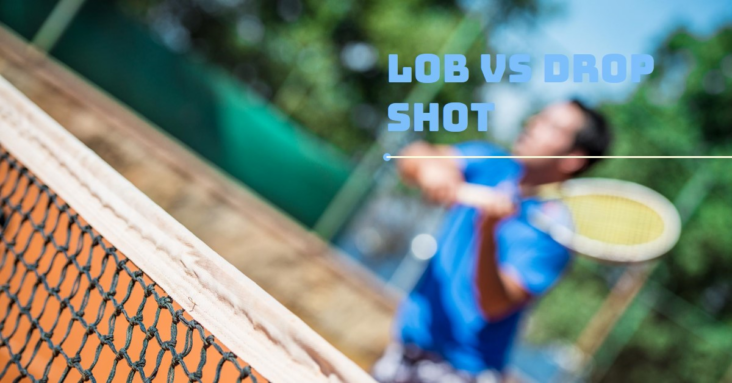Whether you’re a newcomer to pickleball or an experienced player looking to enhance your game, mastering the lob and drop shot is crucial. These shots add strategic depth to your play by manipulating your opponents’ positioning on the court. Let’s dive into the key differences and effective use of lobs and drop shots.
Key Differences Between a Lob and a Drop Shot
| Aspect | Lob | Drop Shot |
|---|---|---|
| Purpose | Pushes players back, targeting those who prefer net play. | Draws opponents into the non-volley zone, forcing them forward. |
| Trajectory | High and deep, arcs over opponents’ heads. | Low and short, barely clears the net and lands softly in the kitchen. |
| Intended Outcome | Forces opponents to return from the baseline or beyond. | Compels opponents to move forward, often resulting in a weak return. |
| When Used | When opponents are close to the net or as a defensive strategy. | To disrupt opponents’ rhythm when they are positioned deep or to transition into net play. |
| Skill Required | Control and power to ensure depth without going out of bounds. | Finesse and precision to land in the kitchen without flying too high. |
| Defensive vs. Offensive | Can be both defensive and offensive, exploiting poor positioning. | Primarily offensive, aiming to control the rally by pressuring the opponent. |
| Effectiveness Against | Effective against players who struggle with backcourt shots. | Effective against less mobile players or those who struggle with quick forward movement. |
Understanding these differences is essential for effectively utilizing each shot in appropriate game situations.
What’s a Lob and When to Use It?
A pickleball lob is a strategic shot that sends the ball in a high arc over your opponents’ heads, landing deep in the backcourt, preferably close to the baseline. This shot is designed to move opponents away from the net, disrupting their position and forcing them to return from a less advantageous position.
Types of Lobs:
- Defensive Lob: Used under pressure to create space and time to reset your position.
- Offensive Lob: Executed aggressively to catch opponents off guard, especially when they are too close to the non-volley zone.
When to Use a Lob:
- Against Net Players: Push opponents back to compromise their offensive stance.
- To Create Space: Open up the court by moving players away from the kitchen.
- As a Defensive Tool: Gain time and reset your stance when under pressure.
- To Exploit Weaknesses: Target opponents who struggle with overhead shots or moving backward.
- In Windy Conditions: Utilize the wind to alter the ball’s trajectory, making it harder to judge.
- For Surprise Attacks: Use unpredictably to catch aggressive opponents off guard.
Tips for Effective Lobbing:
- Accuracy Over Power: Aim for precision and placement near the baseline.
- Use Disguise: Make your lob look like another shot until the last moment.
- Practice Different Angles: Add variety with straight and cross-court lobs.
- Monitor Opponents’ Position: Lob when they are too close to the net or have gaps in defense.
Defending Against a Lob
- Anticipate the Lob: Watch for signs of an impending lob.
- Quick Footwork: Use side or crossover steps to cover ground efficiently.
- Positioning: Get behind the ball to hit it in front of you.
- Choose the Right Shot: Decide between an overhead smash or a defensive return.
- Use a Backhand if Necessary: Be prepared to use a backhand when needed.
- Improve Your Overhead Technique: Practice overhead shots to deter frequent lobbing.
- Communication in Doubles: Coordinate with your partner to cover lobs effectively.
What’s a Drop Shot and When to Use It?
A drop shot is a finesse shot that barely clears the net and lands in the opponent’s kitchen. The goal is to make the ball drop quickly after clearing the net, forcing the opponent to rush forward to return the ball.
When to Use a Drop Shot:
- From the Baseline: Bring opponents forward when they are at the net.
- During a Groundstroke Rally: Change the pace and catch opponents off guard.
- After a Deep Lob: Keep opponents moving and prevent them from settling.
- Against Power Players: Disrupt aggressive players with a soft shot.
- To Exploit Poor Footwork: Target opponents with weak forward movement.
Tips for an Effective Drop Shot:
- Soft Touch: Control paddle speed and angle to gently guide the ball over the net.
- Disguise Your Shot: Make it look like a drive or another shot until the last moment.
- Placement Over Power: Aim for the ball to land close to the net within the kitchen.
- Practice Consistency: Hit drop shots from various positions and conditions.
- Evaluate Your Opponents: Assess their positioning and readiness before executing.
Defending Against a Drop Shot
- Stay Alert and Anticipate: Watch for signs of a drop shot.
- Positioning: Stay within a range that allows you to cover the kitchen effectively.
- Split Step and Quick Reaction: Use the split step to improve balance and readiness.
- Master the Soft Game: Practice soft shots to counter drop shots effectively.
- Improve Your Footwork: Enhance forward movement and agility.
- Use the Correct Stroke: Return with a volley or soft groundstroke.
- Communication in Doubles: Coordinate with your partner to cover drop shots.
- Practice Drop Shot Returns: Regular practice improves reaction time and shot selection.



